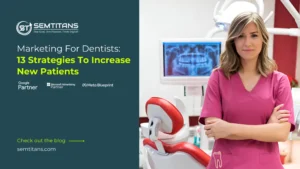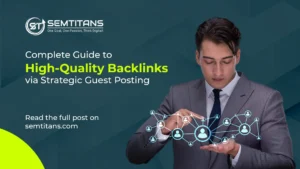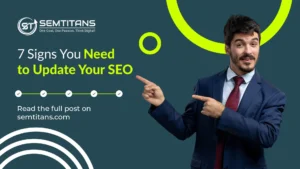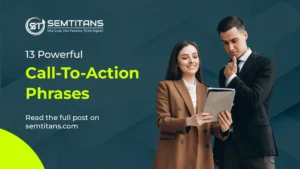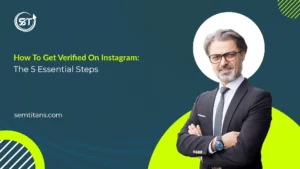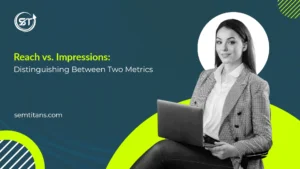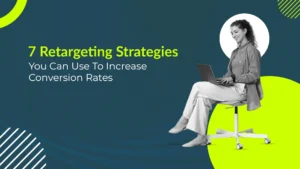
Every day, digital marketers face the same challenges. They want to know how to optimize their blog or the requirements to get a good page ranking on Google and other search engines. The questions like how do I optimize my blog to get a better ranking in search engines? Is it possible to make my page load faster? And most of all, how do I keep up with a changing environment?
Digital marketing is about an improved user experience reaching a goal or objective. As per digital marketing service providers, to create a successful online marketing presence, you must create great content, target the right audience, and choose the proper channels to promote your business. But simply having a strategy to use doesn’t mean conversion.
SEO Blog Post
Blog posts are powerful tools for any business, providing visibility and credibility among target audiences. They can boost your search engine rankings and lead to greater customer loyalty. Unlike other online marketing methods such as paid or print ads, blogging is less expensive, more flexible, and has longer-lasting effects.
Blogging provides a platform for writers to express their thoughts, feelings, and ideas. It also helps writers to keep track of their personal development and growth by sharing their work experiences. Blog Post content helps organizations with brand establishment; when shared on social media, it can help boost the number of followers and drive traffic to your brand website.
Many local seo services for small business service providers say blog posts can be used as self-promotion by allowing people to see what type of business you run. Blog posts are used for informational purposes and help keep people up to date with the latest news and events. This also helps build a stronger relationship between the reader and the writer. It also creates opportunities for backlinks from other websites and social media promotions. To optimize the blog best, we must keep the checklist in mind.
Table of Contents
ToggleSEO Checklist for Blog Optimization
Targeting the Right Keywords
Choosing the right keywords is key to having your content found. It helps you understand what phrases people use to search your content or blog. While researching, we should also consider competitors’ keywords. Researching and comparing your keyword position with your competitors allows you to understand your organic search performance, take advantage of gaps in the market, and identify opportunities to reach new audience segments. Understanding how your competitors rank and what keywords they target can be insightful in developing your search strategy. Typical competitor analysis begins with approximately ten competitors and keyword research across that competitor landscape in your industry.
Use of keyword in the title of the blog
Your title is the first thing people notice on Google and other search engines. A concise, descriptive title is more likely to get picked up in search engine results than a lengthy one without any sense of purpose.
When creating a title, one should include a target keyword or phrase to ensure that Google indexes it correctly. Using the keyword in the title makes it clear what your article is about at first glance so that Google knows exactly what your page is about and can better serve up the content to searchers. Then add some attractive adjectives and adverbs to your title to instill a sense of curiosity in searchers. Remember that readers like lists, how-to’s, and easily scannable benefit statements, so include them where possible. The recommended title tag character should be under 55.
Adding a Meta Description
With every content or blog, it is essential to add a meta description as Google, and other search engines use them to determine what your blog post is about. They also use it to display your blog post in search engine results. Adding a meta description to your blog post can help with your site’s overall SEO. The text should be between 150 and 160 characters, include keywords, and address the same intent as your content.
Optimize Your Header Tags
Header tags are the titles and subtitles of your blog post. Header tags are crucial in making your content easy to read and find. It also defines your blog post’s structure and helps search engine spiders to crawl your site. Then they help people quickly read your content by defining your posts’ structure.
The <h1> tag is the most important page element, followed by the rest of your <h1>, <h2> and <h3> tags. The H1 tag should be in capital letters, include your target keyword, and is often used as the title tag. Use other header tags like H2, H3 to follow a hierarchy to break up your text and signal what kind of content that you’re dealing with.
Optimizing Keywords in Content
Search engines love good content. And, it’s not enough to write well. It will help to incorporate keywords in the right places to ensure search engine crawl. Choosing the right keyword is never an easy task. When targeting keywords, some SEO practitioners choose arbitrary metrics like search volume. But the more competitive the keyword, the more opportunities you will have to rank for other less competitive keywords. After identifying keywords that fit your brand, you want to identify the level of difficulty in ranking for those keywords.
Optimizing keywords in your content is a crucial part of content marketing. We can consider those keywords that can rank easily without much effort. Ranking for a keyword brings traffic to the page and, thus, sales if you have a business. Identify low-hanging keywords that people are already searching for. And then build content for those specific keywords to increase your site’s visibility.
Word Count in Blog
The word count of a blog post does not have any consideration if it is a good or lousy blog post. The classic strategy is to write posts of 500 words. However, this doesn’t mean you must stick entirely with 500 words. Your blog needs to contain a word count that meets the expectations of search engines and your readers. A well-written blog post must have the right content. This is because, without the right content on your blog, you’ll be unable to keep site visitors staying longer on your blog posts.
Page Speed on Both Desktop & Mobile devices
Page speed is crucial for SEO, as page load time can affect your position in Google search results. According to Google, low page load speed is equivalent to getting whacked with a penalty stick.
Ensure that your site loads quickly on both mobile and desktop devices by following the tips in Google’s Page Speed guide. PageSpeed Insights is an easy-to-use tool that provides straightforward recommendations to make your pages faster. Fast page speed on both desktop and mobile can increase your site visitors and conversions.
Add Images and Videos in Blog Posts
How many times have you read a blog post that sounded great but had nothing but text? It’s boring and not very engaging. Images and videos are far more interesting to read, so make sure your blog post contains a featured image and images between paragraphs to make your content more eye-catching and interesting. It also helps attract more clicks; search engines may rank your content higher in search results, and readers will read the text in a given image before moving on.
Use Categories and Tags to Organize Content
Categories and tags are the words that people use to find your content in searches. This is why it’s important to do it right because categories and tags help organize your content not only for you but for the readers and search engines. Categories and tags are the best tools to manage and present your website content. Categories help you group topics together, while tags are used to label individual posts.
Make Internal Linking a Habit
Making internal linking a habit is essential for high-quality SEO. By linking your older posts to newer ones, you ensure that the most important pages on your website continue to be in the spotlight. Not only that, but it ensures that all of your older articles get linked by newer ones, providing long-term SEO benefits. Also, internal linking is a great way to develop a relationship between your new and old articles. When you link back to a relevant post within the body of your article, you can send new readers to check out your older posts with high traffic, many backlinks and ensures that those pages remain in an optimal position on the search results page.
Added your blog to Google Search Console
Adding your blog to Google Search Console is a must. Google Search Console is an excellent tool for all sorts of things related to your website. It will give you information about your site, such as how many visitors visit it, what keywords they used to find you, and more. It will keep you updated on your blog’s performance and traffic and let you know if there are any issues with your website. This information makes it easier to ensure that your website is optimized and ranks well in search results.
Set up Google Analytics
You’ve built a great website and optimized your site for search engines and social media. Now, it’s time to see what people are doing on your site. The first thing you need is to set up Google Analytics so you can start tracking visits. Google Analytics is an analytics service offered by Google that tracks and reports website traffic. It helps you determine how many people are landing on your website, where they came from, how they interacted with the content on your site, and what they purchased. All of this data can help in website auditing also.
Adding a CTA button
If you don’t have any means of conversion on your blog, it means you’re losing many readers who want to become loyal customers. But if you add a CTA (Call-to-action) button on your blog posts, visitors can quickly know to take action like subscribe or leave their email address. This will help you gain more readership and revenue.
Social Media Shares
Adding social media icons to your blog is an excellent way for your readers to share your content. These icons can be added and implemented in just a few minutes, making them efficient and the perfect way to get more traffic from social media sites.
It not only helps you reach a larger audience but also helps with SEO. The more people see and interact with your content, the better your rankings will be on Google. Sharing your content on social media allows your fellow marketers to discover it and has a much better chance of being linked to by other sites.
Optimize Your Old Blog Posts
Many times, it happens that we tend to forget about a blog post after publishing it. However, a lot of things still need to be done to optimize your old content to rank higher in search engines. Most bloggers stop optimizing their blog posts once they publish them, but in reality, SEO is a never-ending process. Many factors can influence your blog post’s success, including its title, description, and content.
Optimizing your older blog posts with the right keywords and key phrases will help boost your search engine rankings and drive more organic traffic to your site. Your older blog posts can still be effective at attracting new visitors if you optimize them. And you may see an increase in conversions from the additional visibility.
When updating old blog posts, it’s a good idea to add links to new relevant content. You’ve optimized your posts for search engines, and now you need to track how well they’re doing. Use Google Analytics to see which blog posts are getting the most traffic. Check out the chart below to help you determine which posts have a higher conversion rate, then create more content like that in the future.
Wrapping up
According to a digital marketing consultant, a good blog post is essential to your marketing strategy because it’s how you connect with potential customers. When you’re looking for help to grow your blog, it’s important to ensure that you follow the best practices regarding SEO. This SEO checklist will ensure you publish successful posts and will help you ensure that your blog is optimized for better search rankings.


